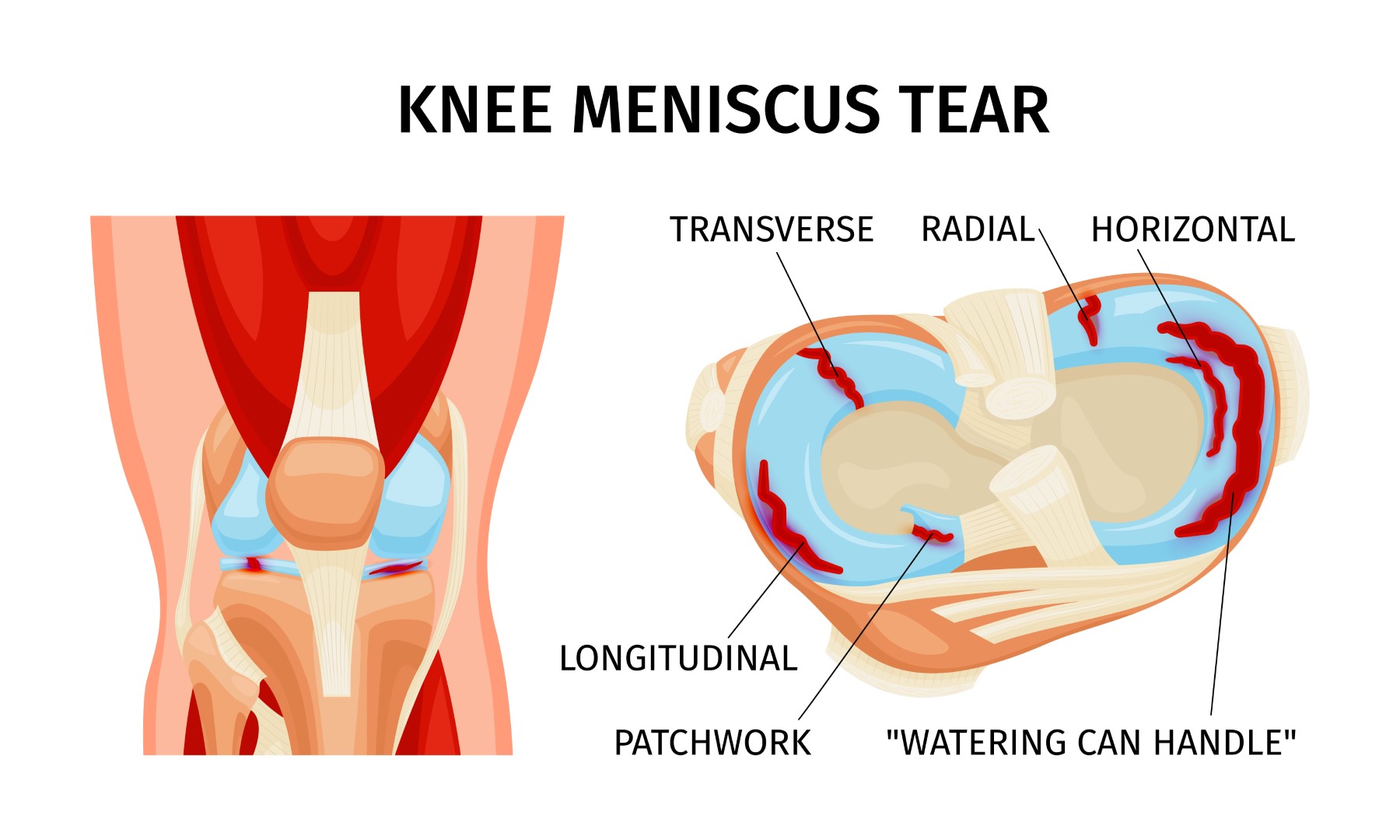There are several types of knee meniscus tears that can occur, which are generally classified based on their location, shape, and severity. The two main types are:
Radial Tears
These tears extend from the inner edge of the meniscus towards the outer edge in a straight line. Radial tears can occur in various patterns, including vertical, oblique, or horizontal, and can be categorized as:
- Vertical Radial Tears: These tears run vertically from the inner to the outer edge of the meniscus. They can be further classified as bucket handle tears (a large vertical tear that causes a fragment to displace) or longitudinal tears (smaller vertical tears).
- Oblique Radial Tears: These tears have an oblique or slanted direction, rather than being strictly vertical or horizontal.
- Horizontal Radial Tears: These tears occur parallel to the surface of the meniscus, dividing it into upper and lower portions.
Flap or Parrot Beak Tears
These tears involve a piece of the meniscus folding over on itself, creating a flap-like structure. They are often referred to as parrot beak tears due to their shape.
In addition to these main types, meniscus tears can also be classified based on their location within the meniscus:
- Medial Meniscus Tears: These tears occur in the meniscus on the inner side of the knee joint, which is more commonly affected than the lateral meniscus.
- Lateral Meniscus Tears: These tears occur in the meniscus on the outer side of the knee joint.
Furthermore, meniscus tears can be categorized based on their severity:
- Partial Thickness Tears: These tears do not extend through the entire thickness of the meniscus.
- Full Thickness Tears: These tears extend from the inner to the outer edge of the meniscus, completely dividing it.
It’s important to note that the specific type and classification of a meniscus tear can vary in each case, and treatment options may differ accordingly. A thorough evaluation by a healthcare professional, such as an orthopedic specialist, is necessary to determine the exact nature of the tear and to develop an appropriate treatment plan.
Source/s: Image by macrovector on Freepik


